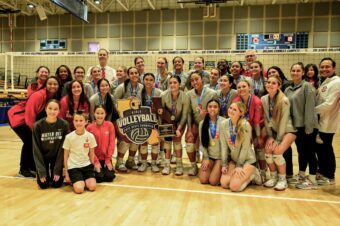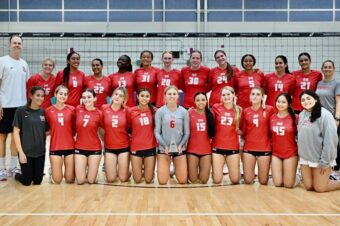POWER = FORCE X VELOCITY
Health & Fitness February 13, 2012 johnwooton 0
Powered by Trucks Anthony Trucks
Sports are fast. Period.
Strength/Power training is the key to all sport speed because speed is power! Think about the power needed to jump high for a dunk in basketball, to swing a baseball bat, to increase agility & sprint speed, to accelerate mid-sprint to catch up to someone in soccer, to hit someone as hard as possible in football, to shoot from the hips in wrestling, to swing a racket or golf club, and the list could go on and on.
Well where does power come from, and how do we increase it?
Here’s the simple equation for power: Power = Force x Velocity. Simply put, it’s the com- bination of muscular strength/force, and the speed at which that strength/force is applied. For example if we put strength into a measurement and said we have 10 units of strength that fully fire at a half second, then we get “x” amount of power. Based on the equation, to increase power we can either increase strength/force, increase the rate at which the muscle fires, or both.
In the weight room specifically, the goal is to obviously increase overall strength/force by a properly-designed max strength-training program where you safely execute lifts with proper form and technique. The proper design of a progressive max strength-training program is paramount to the success of power development. Once a max strength-training phase has been completed, it’s time to start a properly designed and progressed power training phase that includes moderate weights (60-75 percent of your single repition maximum) moved at maximal effort for speed. This allows the nervous system to produce as much strength/force as possible in the shortest amount of time.
If you’re still successfully following along then you should notice that we have addressed how to increase power production in the weight room.
The most important thing to keep in mind is that this only applies to the weight room, so how do we get that power to translate to the field or court that our athletes play on? You incorporate plyometric training for the upper and lower body through P.A.P. training during your lift, and by bodyweight & external loading plyometrics. What are those you ask? Well let me tell you.
P.A.P. means post activation potentiation, or simply doing something explosive right after something heavy to increase the rate of muscular firing. Simple examples are to complete a set of barbell back squats then to step out and do bodyweight or medicine ball squat jumps as high as possible, or following a bench press with explosive clap push ups. This allows the body’s nervous system to fire at full speed while under duress and increases its ability to output greater power.
Body weight & external-loading plyometrics is a form of plyometric training where you simply use your body- weight and/or bands, bungee cords, medicine balls, boxes, etc. to increase the rate at which your muscles fire. This is my favorite because it’s the most sport-specific way to increase power outside of the weight room.
Power is the most important aspect of all sports, so if you want to become a more dominant player put this information to good use.
Anthony Trucks is the owner of Trucks Training facility in Brentwood and covers weight training for SportStars.
johnwooton
SportStars Magazine: High School Sports Articles Online SportStars is your go-to source for the very best high school sports articles in California. Player and team profiles, game coverage, health and fitness tips and the largest Camps, Clinics & Combine resource for athletes. We're the story behind the stats.









No comments so far.
Be first to leave comment below.